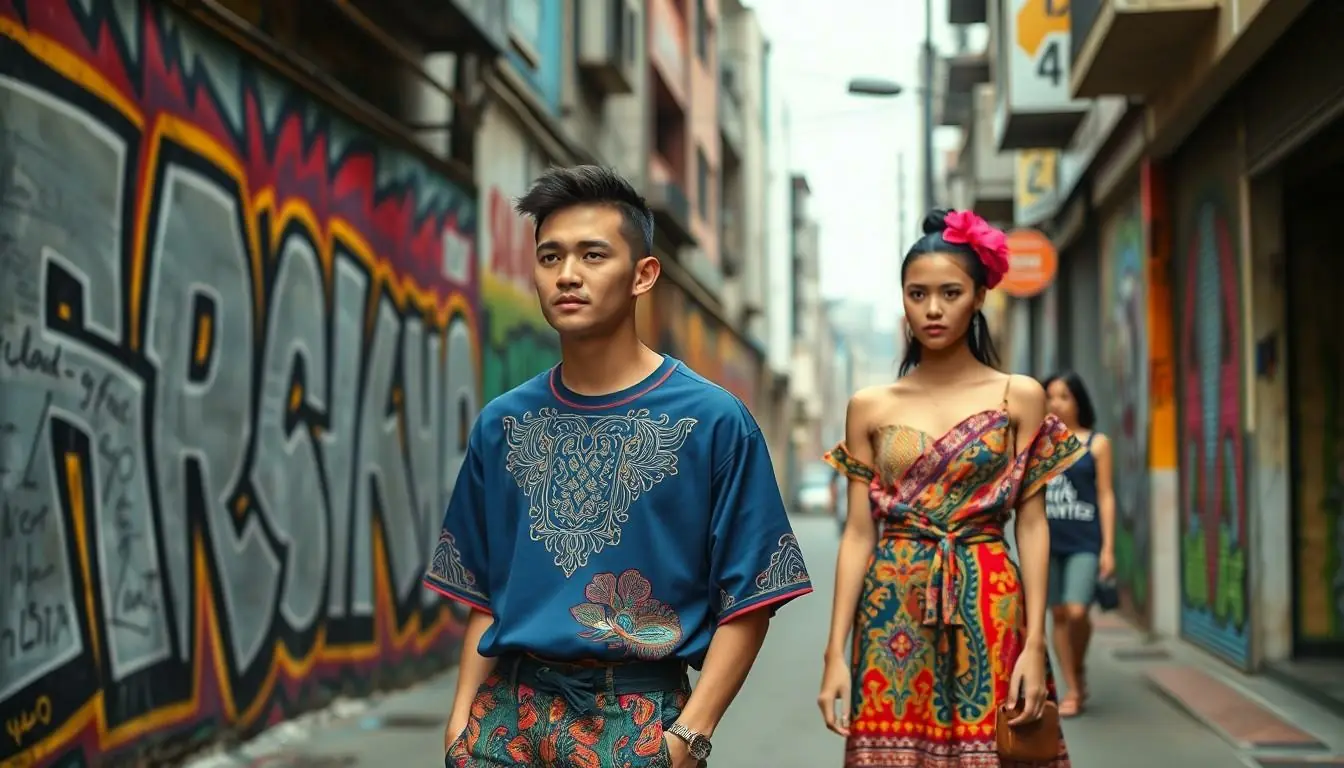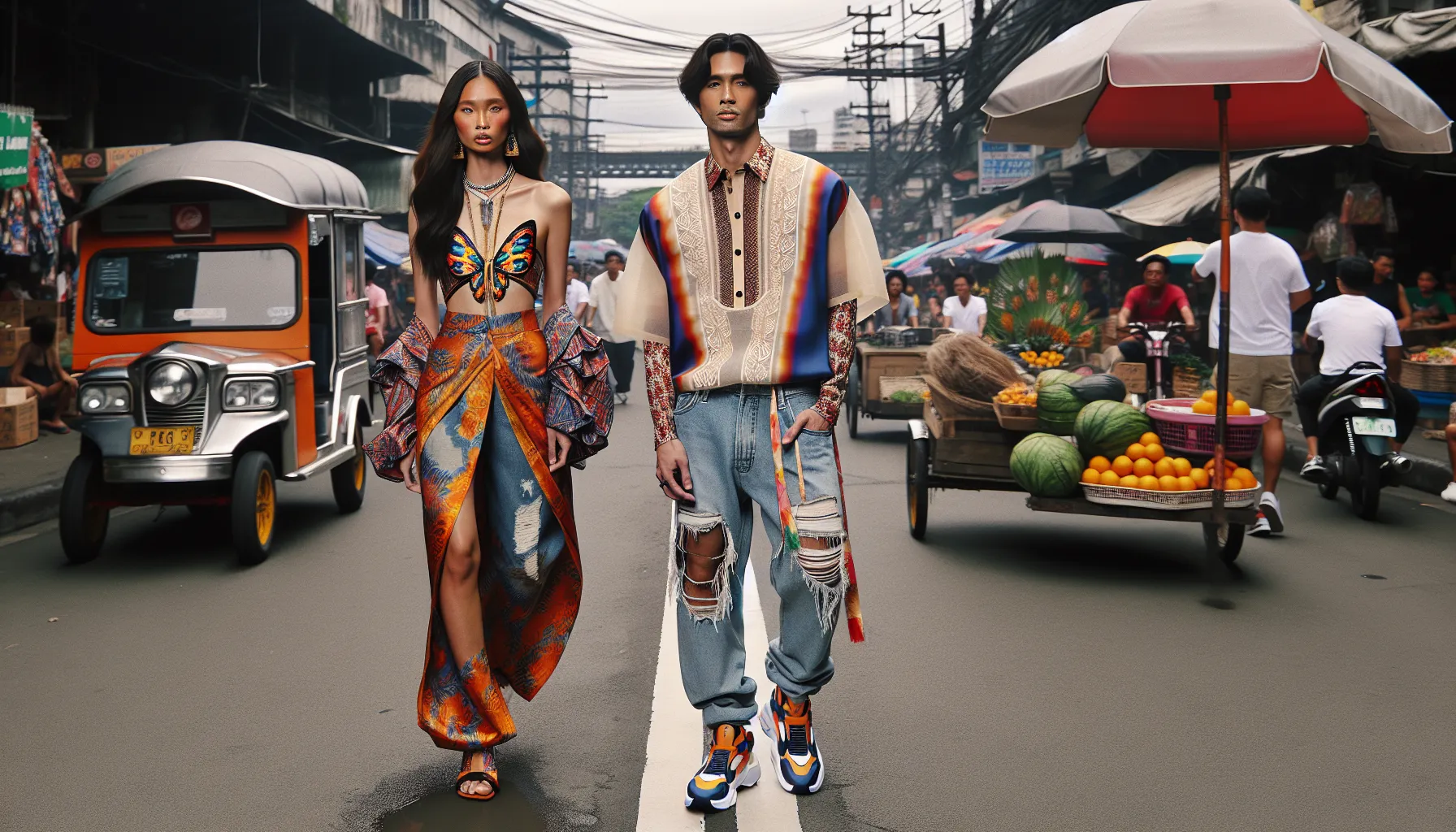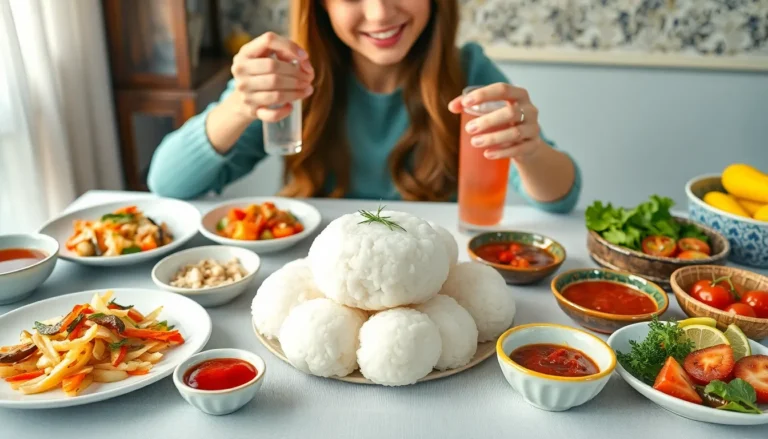Table of Contents
ToggleFilipino streetwear isn’t just a fashion statement; it’s a vibrant tapestry of culture, creativity, and a pinch of rebellion. Picture this: bold colors, unique designs, and a flair that screams, “I’m here to turn heads and maybe steal your fries.” From the bustling streets of Manila to the global stage, Filipino streetwear is redefining what it means to be stylish while staying true to one’s roots.
This scene is more than just clothes; it’s a movement. It’s where tradition meets modernity, and every piece tells a story. With influences ranging from local art to global trends, Filipino streetwear offers something for everyone. So whether you’re looking to make a statement or just want to look effortlessly cool while sipping your favorite boba, dive into the world of Filipino streetwear and discover why it’s the trend you didn’t know you needed.
Overview of Filipino Streetwear
Filipino streetwear showcases a rich tapestry of culture and individuality. Many garments feature bold colors, intricate patterns, and innovative silhouettes, drawing inspiration from local art forms, traditional weaving, and global fashion influences. The movement thrives in urban areas like Manila, where creativity meets self-expression.
Designers often blend historical references with modern aesthetics. Graphic tees, oversized jackets, and unique accessories highlight the talent of emerging Filipino artists. This not only elevates streetwear but also celebrates cultural identity.
Popularity has surged, attracting attention both locally and internationally. Collaborations between streetwear brands and artists amplify the movement’s reach, showcasing a vibrant community that continues to grow. Fashion enthusiasts embrace Filipino streetwear for its authenticity and distinct narrative.
Streetwear culture embraces inclusivity, welcoming individuals from diverse backgrounds. It encourages wearers to express their personalities, whether through eclectic mix-and-match styles or statement pieces that reflect personal stories. The passion for fashion unites aficionados, creating a dynamic subculture that celebrates uniqueness.
Events such as fashion fairs and pop-up markets foster connections among designers, artists, and fashion lovers. These gatherings cultivate creativity, pushing the boundaries of what Filipino streetwear can be. As the scene evolves, the fusion of past, present, and future remains integral to its identity.
Global recognition enhances the profiles of Filipino brands, allowing them to compete on an international scale. Quality craftsmanship and distinctive designs draw attention from global fashion influencers. Filipino streetwear has become a voice for cultural pride, channeling the diverse experiences of its people into every garment.
Key Influences on Filipino Streetwear

Filipino streetwear reflects a vibrant culture shaped by various influences. Cultural heritage and global trends play significant roles in defining its unique style.
Cultural Heritage
Cultural heritage remains a crucial element in Filipino streetwear. Designers incorporate traditional motifs and weaving techniques into their collections, showcasing the country’s rich history. Local art forms inspire bold visual elements that resonate with many. Symbolism from indigenous cultures appears in prints, connecting garments to ancestral roots. Celebrations of identity emerge through fashion, creating a narrative that speaks to Filipino pride. Pieces often feature vibrant colors and intricate patterns, creating a dynamic aesthetic. Each design carries a story, illustrating the seamless blend of the past and present. The revival of traditional crafts strengthens community bonds among artisans and wearers alike.
Global Trends
Global trends significantly influence Filipino streetwear’s evolution. The rise of streetwear in major fashion capitals exposes local designers to international styles. Collaboration between Filipino brands and global influencers introduces fresh perspectives and innovative techniques. Social media amplifies these trends, allowing designers to showcase their work to a broader audience. Additionally, the demand for sustainable fashion encourages Filipino labels to adopt eco-friendly practices. As streetwear culture embraces individuality, personalization becomes a key component in consumers’ choices. Emerging styles draw from diverse global influences, reflecting urban attitudes and lifestyles. The blend of local and global elements creates a vibrant scene that continues to evolve and attract attention internationally.
Notable Filipino Streetwear Brands
Filipino streetwear showcases a blend of established brands and emerging designers, each contributing to the vibrant fashion landscape. Recognition for these brands extends beyond local markets, capturing international attention.
Established Brands
Homegrown brands like Team Manila and Snoop Dogg have carved out significant niches in the streetwear scene. Team Manila reflects Filipino culture through graphic tees and accessories that feature iconic symbols. Snoop Dogg effortlessly fuses comfortable designs with a laid-back aesthetic, appealing to a wide audience. KOTUR pushes the envelope with its innovative street style, drawing inspiration from everyday life while promoting local artisans. Kicks and Bricks specializes in sneaker culture, offering trendy footwear that connects to global sneaker enthusiasts. Each of these brands pushes Filipino streetwear further into the mainstream.
Emerging Designers
Emerging designers like Kiel James Patrick and Kris Abrigo champion fresh voices in the industry. Kiel James Patrick uses vibrant colors and unique cuts to blend modern looks with traditional influences. Kris Abrigo incorporates storytelling into clothing, using imagination to reflect Filipino heritage. Vince Delacruz crafts pieces emphasizing functionality without compromising aesthetics, appealing to urban youth. Lago infuses sustainable practices into fashion, ensuring eco-friendly options. These innovators bring diverse perspectives, shaping the future of Filipino streetwear.
Fashion Trends in Filipino Streetwear
Filipino streetwear thrives on a dynamic blend of styles and aesthetics that highlight cultural significance. Streetwear often features oversized silhouettes and relaxed fits, creating a comfortable yet stylish look. Graphic tees dominate the landscape, showcasing bold statements and artistic designs. Accessories such as bucket hats and utilitarian bags elevate outfits, adding layers of personality. Influences from hip-hop and skate culture resonate, ensuring that each piece speaks to a youthful energy. This eclectic style captures individual expressions and reflects local experiences, making every look distinctive and vibrant.
Popular Styles and Aesthetics
Streetwear in the Philippines showcases a range of popular styles that effortlessly meld tradition with contemporary flair. Athleisure pieces frequently appear, combining comfort and functionality within everyday wear. Layering various garments adds depth to outfits, making versatility key. Moreover, accessories often serve as focal points, drawing attention to unique personal expression. Street culture and music continually shape these trends, infusing a sense of rebellion and artistry into each look. Collaborations among local artists further enrich the aesthetics, ensuring originality and a strong connection to Filipino identity.
Color Palettes and Patterns
Color palettes within Filipino streetwear reflect the country’s vibrant spirit and rich cultural heritage. Bright hues dominate, often inspired by the natural landscape and urban life. Earthy tones also appear, connecting fashion to local traditions and craftsmanship. Patterns play a crucial role, with traditional motifs often incorporated into modern designs. Stripes and abstract shapes frequently emerge, providing visual interest while honoring cultural roots. This combination of color and pattern creates garments that resonate deeply with wearers, transcending mere fashion to tell compelling stories. Each piece thus becomes a canvas for cultural expression.
The Impact of Social Media
Social media plays a crucial role in the Filipino streetwear movement. Platforms like Instagram and TikTok showcase local brands and designs, amplifying their visibility. Videos and images engage audiences, leading to viral trends that stay relevant in the fashion world.
Creatives leverage these platforms to highlight the stories behind their designs, connecting with fans on a personal level. Collaborations between brands and influencers further enhance reach, creating buzz around new collections. They often highlight limited drops, generating excitement and urgency among followers.
User-generated content encourages community, with wearers sharing their styles online. Through hashtags, individuals contribute to the conversation, promoting Filipino streetwear culture. Engagement metrics reveal that local brands gain traction through authentic connections with their audience.
Emerging designers utilize social media to gain recognition both locally and internationally. They’ve successfully established their brands without significant marketing budgets. Metrics indicate a surge in followers accompanies each creative post, demonstrating the effectiveness of an online presence.
Instagram Stories and Reels offer dynamic ways for brands to demonstrate clothing in action. Active engagement with followers fosters a sense of belonging, where fans feel part of the journey. Highlighting behind-the-scenes content allows audiences to appreciate the craftsmanship of each piece.
Discussion around sustainability also thrives on these platforms, with eco-conscious consumers driving demand for ethical practices. Filipino streetwear brands are responding with transparent messaging about materials and production processes. Insights show that sustainability-focused posts resonate well, attracting environmentally aware customers.
Overall, social media not only facilitates brand growth but also shapes the narrative of Filipino streetwear. As platforms evolve, they continue to impact the industry, bridging local culture with global trends.
Filipino streetwear stands as a vibrant testament to the country’s rich cultural heritage and modern creativity. With its unique blend of traditional motifs and contemporary designs, it captures the essence of Filipino identity while appealing to a global audience. The movement’s inclusivity fosters a sense of community among designers and enthusiasts alike, pushing the boundaries of fashion and self-expression.
As Filipino streetwear continues to evolve, its influence only grows stronger. The fusion of local artistry with global trends ensures that each piece not only tells a story but also resonates deeply with wearers. This dynamic landscape promises an exciting future, where tradition and innovation coexist, making Filipino streetwear a significant player on the global fashion stage.






